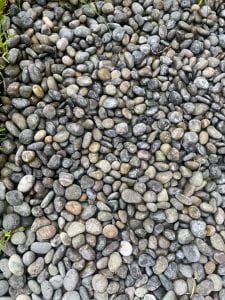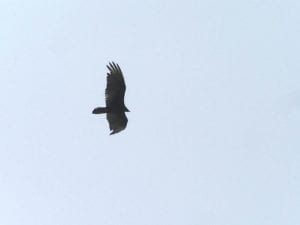By Kayla Russo
8:30am 6/7/2021
We met Dr. Cin-Ty Lee in the breezeway of the Keith Weiss Geological Laboratories building to go on an immersive nature walk within the Rice campus. Once everyone arrived we began our journey to Harris Gully, a three acre plot of restored prairie located near Weiss College.

Question: What did you expect to see and learn on this trip?
Liz: “I’m expecting to see and learn more about the vegetation and climate here. I’m even looking forward to it more because of the fact that I live here, and I’m interested in learning more about my own “habitat.” There are so many different species of birds around here that it’s difficult to be sure of which ones they are at times! I’m hoping to be more familiar with animal life and plant life equally, and honing my observation skills even further.”
Neel: “I am really looking forward to this experience of being able to observe the scale of biodiversity within a city as big as Houston. Being that the university itself is an Arboretum, I am curious to learn more about the local flora that once flourished throughout the Houston area before Urbanization. Also due to the fact that there are very few remnants of the prairie ecosystem within Houston, it will be really interesting to see the different plant species as well as the birds and insects that call it their home. Lastly, I am interested in seeing how Dr. Lee observes the surrounding wildlife, because I would love to have the ability to broaden my field of view and truly immerse myself within nature.”
Our First stop along the way to Harris Gully was a group of rocks located outside of the Keith Weiss building. We identified the rocks and worked to understand how the features of the rock give us indications about its history. Some of the rocks were sandstone while others were granite; we made some speculations about how rock composition affects lichen growth.

Our second stop on the way to Harris Gully was a patch of small stones used to help drain buildings. The exact origin of the stones were unknown, but they were primarily igneous. Dr. Cin-Ty Lee explained how the features of the stones could help understand the source of the magma it was created from.

We finished our walk to Harris Gully with a few small stops to take note of resurrection fern, a piece of the Berlin Wall located on campus, and a few birds flying in the area. Upon closer inspection of the Berlin Wall, we were able to see how they used pebbles and support beams to help build the structure. We spotted a Blue Jay flying across an open field, and Dr. Cin-Ty Lee was able to snap a picture of Turkey Vulture flying above us.

Question: What was your favorite plant or animal on the trip?
Zach: “My favorite was the ball moss, which is not actually a moss but it is a member of the pineapple family (bromeliads). It is also epiphytic.”
Neel: “The Chinese Tallow: known for its heart shaped leaves. It was introduced in the gulf coast region from Asia.”
Trinity: “My favorite was the popping pea trees. They make a popping sound when they send off their seeds up to two meters away.”
Finally, we made it to Harris Gully, and it was beautiful. Dr. Cin-Ty Lee helped to identify many plants and insects for us. There were several different types of bees, pollinating a variety of flowers and plants in the area. The juxtaposition between the natural prairie and the urban setting was the most clear at angles with the Houston skyline in the background.


Towards the center of Harris Gully, Janae spotted an Eastern Eyed Click Beetle. It was the first time Dr. Cin-Ty Lee had ever seen one on campus; He even went as far as to post a short video of it on his twitter page.

One of our final incredible sights along the walk was an active predator/prey interaction between a robber fly and a wasp. The robber fly has paralytic saliva that enables it suck out the bodily contents of its live prey.

Question: What was your favorite fact from the trip?
Janae: “Resurrection Fern shrivels up and looks dead for a few days but as soon as rain hits them they flourish and look as though they have been brought back to life.”
Chris: “Vegetation in the northerly climates has a more serrated leaf shape, most likely for water collection, whereas tropical vegetation has rounded leaves to avoid water.”
Liz: “There are over 600 different bird species that can be spotted in the Houston area.”

